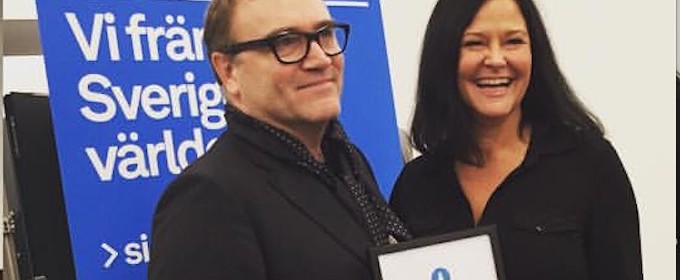The bombings in Brussels on 22nd March 2016 had a devastating impact on the city. Bombs at Brussels airport and a metro station in the city killed 32 people from around the world with many more injured in these attacks. The city has not yet returned to normality in a security sense.
However, the impact goes beyond just the security issues, impacting the city’s economic life. The country’s tourist industry is in despair. Hospitality businesses in the northern Flanders region say revenues are down by a third since March 22nd, according to a survey by the Unizo employers’ group.
But what should the city do about trying to repair it’s reputation to bring tourists back to the city?
I was invited to give a keynote speech in Brussels on the topic by the Belgian marketing association STIMA. They wanted me to focus on the damage done to the city’s brand and reputation and to give my thoughts on the long term impact and how the city should respond. The date for the speech was June 23rd, a huge co-incidence for me, as this happens to be the day of the UK EU referendum, and here I am a Brit in the capital city of the EU itself.
The first thing to realise is that Brussels is a complex place. Three languages (if you include English) two cultures, French and Flemish, and nineteen mayors apparently. I google the Brussels logotype and end up with a number of differing options. Which Brussels are we talking about?
In preparation for my speech I do something that always gives me a little important insight. I conduct my own poll of just 150 diverse friends, from different backgrounds and different nationalities, asking them a very simple question. Brussels: top of mind give me a single word that sums it up for you. A difficult question perhaps, but the answers were revealing. I build these into a word cloud for my presentation (More on this below).
Never waste a good crisis
I’ve always liked the expression
Never Waste A Good Crisis. An Icelandic colleague uses it when describing the devastating ash cloud that blanketed Europe back in April 2010. If you remember it, Europe went into lock down. Planes stopped flying. News media flooded into Iceland, broadcasting images of the volcano,
Eyjafjallajökull, spewing ash into the sky. After about a week the news media got tired of broadcasting the same images and the Icelanders realised they actually had an opportunity. They had been trying for years to get the international news media to visit their island and here they were. They started getting the news media to cover other aspects of the island nation – other than the volcano. These more positive images were beamed around the world. Not so bad. The following year Iceland launched a fresh and bouncy promotional campaign called
Inspired By Iceland. They encouraged people to share their own Icelandic stories. It proved a success. Visitor numbers before the volcanic eruption in 2009 had been
under half a million. By
2013 they had risen to over
800,000 with average spend per visitor up as well. A crisis can also offer an opportunity.
The second world war can certainly be considered a crisis but just look at what came out of it. We wouldn’t have modern computing if it hadn’t been for the developments on both sides of the Atlantic during world war two. The Americans and their ENIAC, at the University of Pennsylvania and the British with their Colossus at Bletchley Park. Radar also came out of the second world war, and out of radar came the development of microwave cookers (after a technician figured out what was cooking the food he’d left on top of an early radar set). We even have the second world war to thank for the creation of Fanta, the soft drink. In December 1941, as America entered the war, the Germans were denied supplies of the Coke secret ingredient syrup, 7X. Being inventive, the Germans realised they had access to oranges, as they had occupied north Africa, and so they invented a new soda drink –
Fantastik, eventually shortened to
Fanta. A crisis can also offer an opportunity.
So what about cities and places? New York, 1976 and the city and state are reeling from the oil crisis, a devastating crime wave is rampant and, to cap it all, they are on the verge of bankruptcy. President Ford refuses to bail them out. New York is in a deep crisis now. But being New Yorkers they came up with a plan. They needed to get tourists to come back. Back into the restaurants, theatres and hotels. They hit on a strategy based on the idea
market today, visitors tomorrow. But they need a symbol. Something that sums up the spirit of New Yorkers. They turn to one of the world’s great graphic designers, Milton Glaser, who is a true New Yorker himself. They asked Milton for a device that can be used with the campaign. Out of that is born the iconic I heart NY logotype. Forty years later and the city has never looked back. (if you are interested in more of the I heart NY story, go to our podcast interview with Milton Glaser himself:
Podcast Milton Glazer).
Another case, from personal experience, is that of Stockholm – where it took a crisis for the city to take action.
In late 2003 my team was selected to work on the branding of Stockholm. It was a fantastic assignment to have won. Stockholm was a city I’d loved since I’d first time I arrived in Sweden ten years earlier and I’d always felt it had not been marketed as it should have been. It struck me that up until that point in
time Stockholm had never truly needed to compete. If the city promoted itself and made an effort, it seemed to grow and prosper. If the city did no promotion and didn’t try too hard, it still seemed to grow and prosper. Everything for Stockholm was easy. So there had been no incentive to really compete.
But in early 2002 two things changed dramatically. First, the dot-com crash and the associated problems of the telecom giant Ericsson. Stockholm suffered more than many other places in Scandinavia during this period and the city felt the effects of the melt down. Second, the globalisation of the world was well underway. With the growth of the Internet and lower costs of air travel, Stockholm was suddenly competing globally as well as regionally for tourism and inward investment. People and companies had more choice than ever. The city only began to get its act together when faced with these issues in 2002.
I’m happy to say that ten years on the resulting work and positioning of the city as
Stockholm The Capital of Scandinavia has helped get the city back on top. Today Stockholm is the number one tourist destination in Scandinavia, and the place most international companies choose for their headquarters in this part of the world. Finding a viable and strong positioning for a place or city, a positioning that makes sense, and supports its marketing, can be invaluable in keeping the brand aligned with its true strengths. So a crisis can sometimes be a good thing.
Places as brands and the one word test
When considering the Brussels question and the recent terrorist attacks impact on the city’s
brand image, some people might actually question whether a place is a brand at all. This is a legitimate question.
But at their simplest brands are really just about what people think. If I say BMW, McDonalds, or Virgin Atlantic you’ll associate those names with certain values and expectations – both good and bad, but you will have perceptions. It’s no different with a place in that respect. Think of London, Paris, San Francisco or even Newark, New jersey and you will have certain perceptions influenced by a whole host of positive and negative interactions. And if say you know nothing of Newark (lucky you) then that informs how you feel about it as well. So places are brands whether you like it or not. They represent and stand for a set of values and expectations in our minds. It’s top of mind stuff that we are interested in at the initial stage. That’s why I like my one word test. That’s why I asked 150 friends to give me their one word for Brussels.
Two topics dominated the responses I received. The
EU and
terrorism. A very distant third were more traditional topics such as
The Grande Place,
waffles,
sprouts and
Tin Tin. Brussels I feel is in a crisis.
The
EU association was overwhelmingly negative. It was associated with
bureaucracy,
red tape,
excessive cost,
pen pushers,
politicians on a gravy train. Not exactly a very positive association for the city. Even more worryingly, on almost an equal level with the
EU as a response, were words associated with the deadly bombings of 22nd March.
Terrorism,
terrorists,
fear,
tragedy,
dangerous,
bombs. It presented a clear picture. I believe if I had taken a larger sample of thousands of people the result would have been fairly similar.
How fragile is brand reputation?
The question I had been asked to consider was how fragile is brand reputation and how long does it take to fix? In this case the brand reputation of a city devastated by terrorist attacks. Are there examples we can look at to gain some insights?
Firstly, to take an example from a completely different area, and a far less tragic situation, the case of Volkswagen and the emissions scandal tells us a little about human nature when it comes to forgetting and moving on. The diesel-gate news story broke in September 2015. Within days the CEO, Martin Winterkorn, had resigned and the news just seemed to get worse every day for VW as their blatant cheating with the emissions tests on cars sold throughout the US became clear. Global sales for VW in 2014 had been 10.1 million vehicles and as soon as the crisis hit, sales fell. At the end of 2015 sales had fallen to 9.9 million vehicles for the year. The brand had obviously taken a knock and people were even talking about the impact this had on the
German brand itself. A new CEO was appointed, actions are promised and the company announces a €10 billion investment into electric cars as they try to get their mojo back. By mid 2016, as I’m writing this, VW sales have completely recovered and they are back into growth. As one industry commentator said “
The consumer doesn’t actually take that long to forgive and forget,”. But the brand has to take action. Do things to convince us the issues are fixed. Performance creates amnesia.
Look at the case of Robert Downey junior. Google the image of him being taken away in handcuffs in an orange prison overall to an LA county jail. So what does he do. He takes real, positive, action. He doesn’t launch a PR campaign, he does something much more meaningful. He just does good stuff. He makes good movies. Today we see him as Iron-Man and a great actor. He’s convinced us he’s moved on and that he has changed. Performance creates amnesia. Brands and places can learn a lot from such examples.
But the question is does this apply to places?
Go back to London and July 7th, 2005. A series of co-ordinated bombings left the city with over forty dead, hundreds injured and the city reeling. It prompted the first instance of
consumer generated content, or
citizens’ journalism. With smart phones now equipped with cameras, images and films were instantly available as the awful events unfolded. The BBC had over 50 images within an hour. Today the BBC receives over 10,000 e-mails a day when a big story breaks.
The impact of the 2005 bombings? Today London feels as relatively safe as any place you could choose. Part of the reason for this is confidence in the security services and their intelligence activities. Part of the price for this security is one surveillance camera for every eleven people in the country.
After the events of July 7th 2005 tourism dropped off a cliff. However, by later even in the same year it had recovered and was already growing again and since 2005 the city has staged a successful, and importantly safe, Olympics.
Today Turkey is in the cross hairs of the terrorists. Tourism in the country has fallen by 40% in the last two years and recovery looks difficult. Worryingly some places never recover. Look at Beirut, favourite of the jet set in the early 1960s.
The point is places and even brands, need to convince us they have taken action. Real action to fix the problems.
I believe all brands are fragile but if you take real action, not just launch advertising campaigns or PR initiatives, they can recover with time and care.
So my five thoughts about places facing a crisis:
- Use a crisis to fix a problem
- Positioning can be key (and it’s not just about logos or taglines)
- Work and think long term (especially with the politicians)
- Real involvement of stakeholders – it’s vital. Involve them fully in the process
- Performance creates amnesia (VW and Robert Downey JR,) – don’t just run advertising campaigns, take real action to fix the issue
Brussels problems have not gone away. Taking the taxi to the airport in Brussels still feels like a city under siege, with multiple road blocks and heavily armed soldiers. There are still too many alerts and threats from extremist organisations targeting the city.
Brussels needs to
genuinely convince us it is a secure place again and that they have made real changes to fix the issues they have.
Then we can get back to talking once more about moules, frites and tin tin.
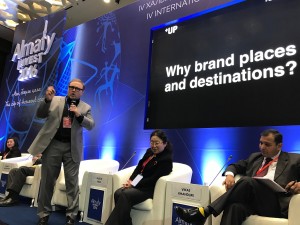
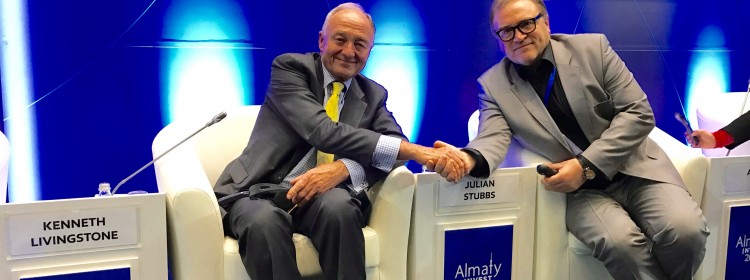

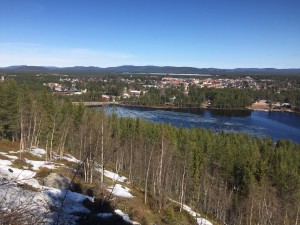
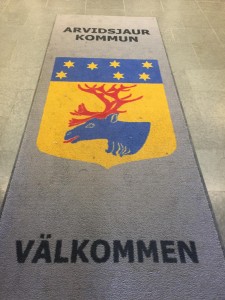
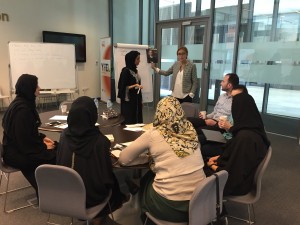 We have great discussions around digital, Inbound Marketing, developing content and emerging trends. During this workshop we break not for a fika but for prayers. Again, we get great input and interaction at the workshops, with the noise level rising during the breakout sessions as the attendees really get into it. It was something I’ll never forget. I just think how lucky I am to have experienced two such contrasting places in the space of just a couple of weeks. From Lapland to Abu Dhabi.
We have great discussions around digital, Inbound Marketing, developing content and emerging trends. During this workshop we break not for a fika but for prayers. Again, we get great input and interaction at the workshops, with the noise level rising during the breakout sessions as the attendees really get into it. It was something I’ll never forget. I just think how lucky I am to have experienced two such contrasting places in the space of just a couple of weeks. From Lapland to Abu Dhabi.

